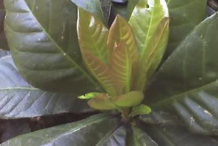| Powder Puff Tree Quick Facts |
| Name: |
Powder Puff Tree |
| Scientific Name: |
Barringtonia racemosa |
| Origin |
Coastal areas of eastern Africa from Somalia to South Africa, through Madagascar and other Indian Ocean islands |
| Colors |
Green, green tinged purplish ripening to purplish-red |
| Shapes |
Ovoid-cylindric, somewhat quadrangular with 4 ridges, 5–9 by 3–4 cm |
| Health benefits |
Beneficial for malaria, cough, asthma, jaundice, headache, eye inflammation, diarrhea, rheumatism, chicken pox, ulcerated nose and sores. |
Powder Puff Tree scientifically known as Barringtonia racemosa is actually a small tree in the family Lecythidaceae (Brazil-nut family) native to coastal areas of eastern Africa from Somalia to South Africa, through Madagascar and other Indian Ocean islands to tropical south Asia, southeast Asia, southern China, the Ryukyu Islands of Japan, northern Australia, Micronesia and Polynesia. Some of the popular common names of the plants include Barringtonia, Brack-Water Mangrove, Common Putat, Fish-Killer Tree, Fish-Poison Tree, Fish- Poison Wood, Freshwater Mangrove, Hippo Apple, Powder-Puff Tree, Putat, Small-Leaved Barringtonia and Wild Guava.
The genus Barringtonia contains 56 species and is named after Daines Barrington, an 18th century botanist, jurist and antiquary. The specific name racemosa refers to the long racemes on which the flowers and fruit are borne. B. racemosa is the only indigenous species of this genus occurring in South Africa. Two Asian species exist in cultivation in the Durban Botanic Gardens- B. asiatica and B. acutangula. It is a multipurpose tree; that is harvested from the wild for local use as a food, medicine and source of materials. It is occasionally planted as a roadside tree.
Plant Description
Powder Puff Tree is a small, fast-growing, evergreen tree that grows about 4–8 m high but can attain a height of 15 m. The plant occurs primarily in primary and secondary forests in inundated flood plains on tidal river banks, or in mangrove swamp and estuarine localities. It is also found in undisturbed to slightly open (disturbed) mixed dipterocarp to sub-montane forests. The plant normally tolerates saline condition but does best in heavy clays, sandy loams or rich volcanic soils. It tolerates dry conditions but is intolerant of any frost. The plant has rounded crown, greyish-brown, smooth or fissured bark and spreading surface roots.
Leaves
Leaves are alternating, borne on glabrous, 2–15 mm long petioles, often clustered toward the end of branches. Leaf lamina is deep green, large, obovate oblong, 8–35 cm by 4–14 cm, with cuneate base acute or acuminate apex and serrate crenulate margins.
Flower
Flowers produced in pendant, terminal or axillary many-flowered racemes up to 60–100 cm long. The flowers exude a pungent, putrid yet faintly sweet odor. Flowers are white to pale pink, bisexual, 4-merous, sepals fused at base separate into 4 concave lobes, green tinged pink; petals elliptic to oblong-ovate, up to 3 x 1 cm, joined to staminal tube, stamens numerous with 3–3.5 cm long filaments, white or pinkish, forming a central mass; ovary 2–4 loculed with a red style.
Fruit
Fruit is ovoid-cylindric, somewhat quadrangular with 4 ridges, 5–9 by 3–4 cm, with green, green tinged purplish ripening to purplish-red, pericarp with persistent calyx remnants and style. Each fruit has a large, ovoid, 2–3 cm seed surrounded by the fibrous, spongy flesh. Seeds are aromatic. The Powder-puff tree is a protected tree in South Africa.
Traditional Uses of Powder Puff Tree
- Zulus used the fruit as a therapy for malaria South Africa.
- Extracts or preparations of the fruit have been used against malaria, cough, asthma, jaundice, headache, eye inflammation, diarrhea and sores.
- Bark decoction is applied externally to treat rheumatism.
- Seeds were used to treat eye inflammation and by midwives for parturition.
- Root decoction was used as a febrifuge in eastern Africa.
- Barringtonia racemosa has been used widely in traditional medicine for anti-inflammation and anticancer in Malaysia.
- Leaves traditionally were used to treat high blood pressure and as a depurative.
- Pounded leaves alone or together with the root or bark have been used to treat chicken pox.
- Leaves have been used to treat high blood pressure and as a depurative.
- Warmed juice from the fruit has been used for treating ulcerated nose.
- Fruit has been used for poulticing for sore throat and cutaneous eruptions and was found efficacious in coughs, asthma, and diarrhea in India.
- Roots have cooling properties and were used as deobstruent.
- Seeds are aromatic and found useful in treating colics and ophthalmic problems.
- Ethno medical survey has shown that the seeds of Barringtonia racemosa are traditionally used in certain remote villages of Kerala (India) to treat cancer like diseases.
- Bark has been used externally in decoction as an anti-rheumatic in Philippines.
- Decoction of the bark is externally applied as an antirheumatic and to treat chickenpox.
- Bark is applied externally to treat chicken pox and as a poultice to relieve itch.
- Fruit is used to treat coughs, asthma and diarrhea.
- Fruit is used externally for poulticing sore throat and skin eruptions.
- Decoction of the scraped nut is drunk to relieve a cough, sinusitis or bronchitis.
- Although considered poisonous, the seeds are used to treat intestinal worms, and are used by midwives for promoting parturition.
- Seed is peeled, mixed with flour and oil, and used in the treatment of diarrhea.
- Seed is used externally to treat ophthalmia.
- Kernels of the drupe are mixed with milk to treat bilious diseases and jaundice.
- Seed has been used as an insecticide and tonic.
- Seeds along with other ingredients are employed in preparations for the treatment of itch, piles and typhoid fever.
- Bark is also used for gastric ulcers.
Culinary Uses
- Fruits and leaves are commonly sold in the local day and weekend markets in Peninsular Malaysia.
- Young leaves and fruit are edible. Leaves are usually soaked in lime water first in order to remove their bitterness.
- Young leaves are often eaten raw as ulam dipped in sambal, or cooked as vegetable in Malaysia.
- Fruit is also eaten as ulam or pickled.
- Fruit is also pounded to extract the starchy content, which is made into cakes.
- Seeds are pounded to extract the starchy content, which is made into cakes.
- Kernels of the seeds are grated on a piece of thorny stem of a rattan.
- Water is added and a milky juice is squeezed out of the pulp, resembling the milk expressed from grated coconut.
- Milky liquid is allowed to stand in boat-shaped dishes made of palm sheaths. A starchy substance is deposited and the water carefully drawn off. The deposit is made into cakes, which are roasted and eaten.
Other Facts
- Barringtonia racemosa provides a medium weight, semi-durable hardwood which is used for house posts, beams, general planking, flooring, boats, cabinet work, boxes, crates, agricultural implements, carts, wooden pallets, household utensils, moldings, carving, turnery, wooden tiles and paving.
- It is also suitable for plywood and veneer manufacture.
- Branches and wood is also suitable for fuel-wood.
- Fibers have been utilized in various kinds of hardboard, particle-board, and black board and for pulp.
- Bark fibers have used for cordage.
- Bark also yields tannin.
- Seeds, bark, wood and roots contain the poison saponin and is used to stun fish.
- Extracts from the plant are reported effective against Citrus aphids.
- In Bengal, India, the seeds were used to poison people and coconut was said to be the antidote.
- Oil obtained from the seed is used as an illuminant.
- Bark of the stems and roots has high tannin content and is used locally for tanning.
- Seed contains saponins and is used as an insecticide. Extracts of the plant have proved effective against Citrus aphis.
- Bark is utilized as cordage.
- Wood is used for light work that does not require great strength.
- It is used additionally for carts, rice pounders and cabinetwork in India.
- It has been reported that when treated with preservatives, the timber can be used to make good ties and paving blocks in Philippines.
- Wood has additionally been used for carving and turnery in Pacific region.
- Wood has been applied in various kinds of wood-based panels such as hardboard, particleboard and block board, and has also been used for the production of pulp.
Precautions
- Seed contains saponins and is poisonous.
- It is sometimes used as a fish poison.
- Pounded roots, fruits and bark are all used as fish poisons.
- Fruits are used to poison wild pigs.
References:
http://www.theplantlist.org/tpl/record/kew-313527
https://www.itis.gov/servlet/SingleRpt/SingleRpt?search_topic=TSN&search_value=896469#null
https://davesgarden.com/guides/pf/go/158739/
https://plants.usda.gov/core/profile?symbol=BARA5
https://uses.plantnet-project.org/en/Barringtonia_racemosa_(PROTA)
https://en.wikipedia.org/wiki/Barringtonia_racemosa
http://pza.sanbi.org/barringtonia-racemosa
Comments
comments


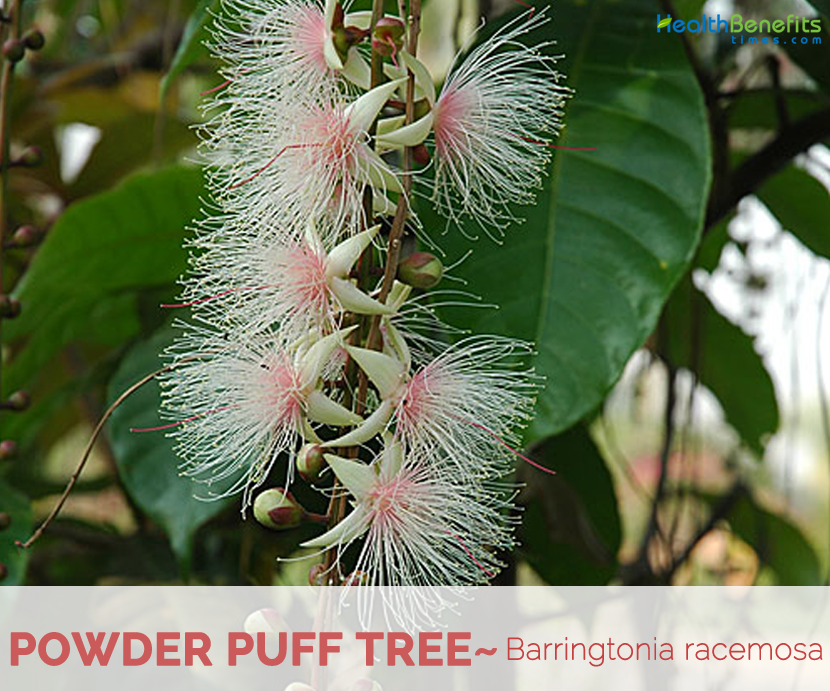
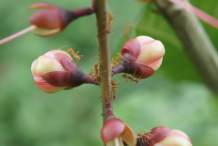
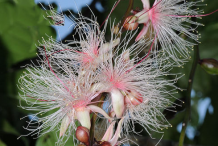
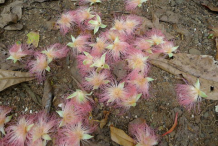

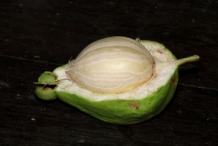
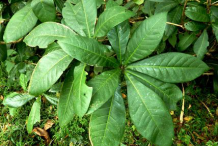
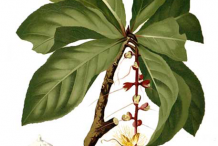
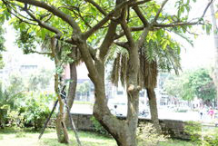

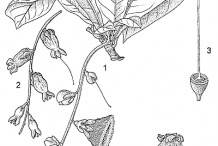
![Trunk-of-Powder-Puff-Tree] Trunk-of-Powder-Puff-Tree]](https://www.healthbenefitstimes.com/9/gallery/powder-puff-tree/cache/Trunk-of-Powder-Puff-Tree.png-nggid047030-ngg0dyn-218x146x100-00f0w010c011r110f110r010t010.png)
